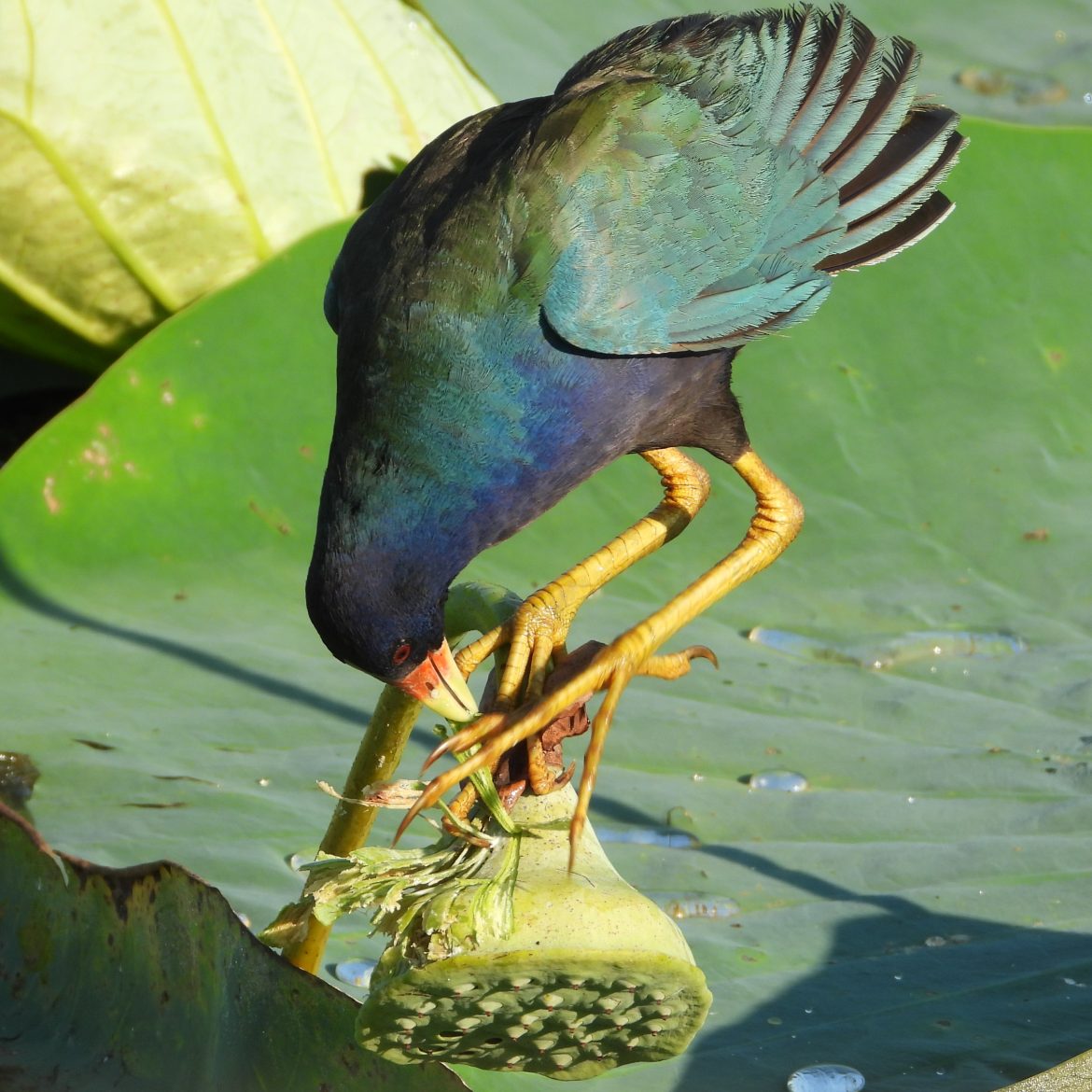By Celeste Silling
If you have never seen a Purple Gallinule, now is the perfect time to visit Brazos Bend State Park to see one. The boardwalk at the State Park’s “40 Acre Lake” reliably hosts these birds as well as Common Gallinules and other waterbirds.
Purple Gallinules are perhaps some of the whimsical-looking birds on the Upper Texas Coast. Their feathers are an iridescent purple, with shades of blues, blacks, and greens mixed in. Their beaks are bright red with a neon yellow tip. Their feet are bright yellow as well, and have incredibly long toes. The toes allow them to spread their weight out over a large surface, so that they can walk and run over lily pads and other aquatic vegetation without sinking! Overall, they look like a child’s drawing of a fantastical bird come to life.
Purple Gallinules live in freshwater marshes, especially those with lily pads or other floating vegetation. At the state Park, they make use of the American Lotus lily pads that float on the lakes. The gallinules will use these pads to walk around the lakes looking for food. They eat an omnivorous diet of spiders, beetles, and other bugs along with flowers, leaves, seeds and fruits. Handily, they eat water hyacinth, which is an invasive floating flower that plagues lakes and bayous in our area.
A favorite treat of the Purple Gallinule is the fruit and seeds of the American Lotus. The American Lotus is a native aquatic water lily with pale yellow flowers and flat round leaves that umbrella on or above the water. Their seed/fruit pods are cone-shaped with holes on the top surface. The Purple Gallinules will tear at the seed pods with their beaks, peeling them like an orange, and using their long toes to hold the peel aside. Then, they will pluck the small yellow fruits from inside and eat them or feed them to their chicks.
The seeds and fruits of the American Lotus can also be a delicious snack for us humans! The young seeds can be eaten like peas, and the mature seeds can be popped like popcorn. This plant was eaten by Native Americans across the U.S., as its range is quite vast. Of course, the American Lotuses at Brazos Bend State Park are reserved for the wildlife (don’t take them!) but if you find these plants elsewhere, you might consider researching some ways to prepare and eat them.
The Purple Gallinule nesting season is coming to a close, and many of them have chicks now. It’s fascinating to watch the parents lead their babies around the lily pads, or peel lotus fruits for them to eat. If you watch and listen closely, you can hear the parents clucking at their chicks to keep them in line. At Brazos Bend, as with all wildlife viewing, be sure to be quite and move slowly, so as not to scare the birds away. Hopefully you will get to see these amazing birds and plants up close and in the wild!
Photo: Purple Gallinule and American Lotus
Credit: Celeste Silling

